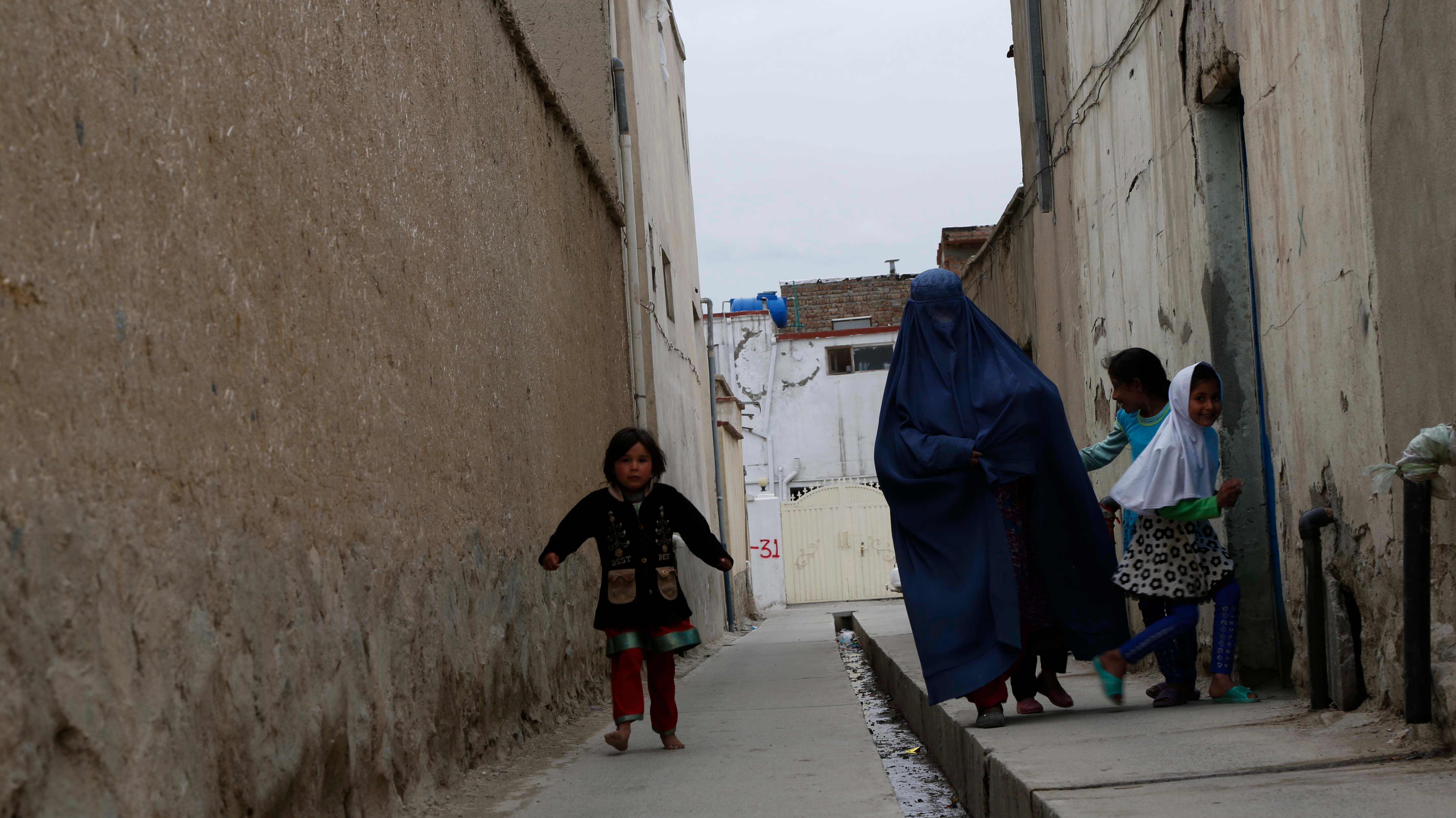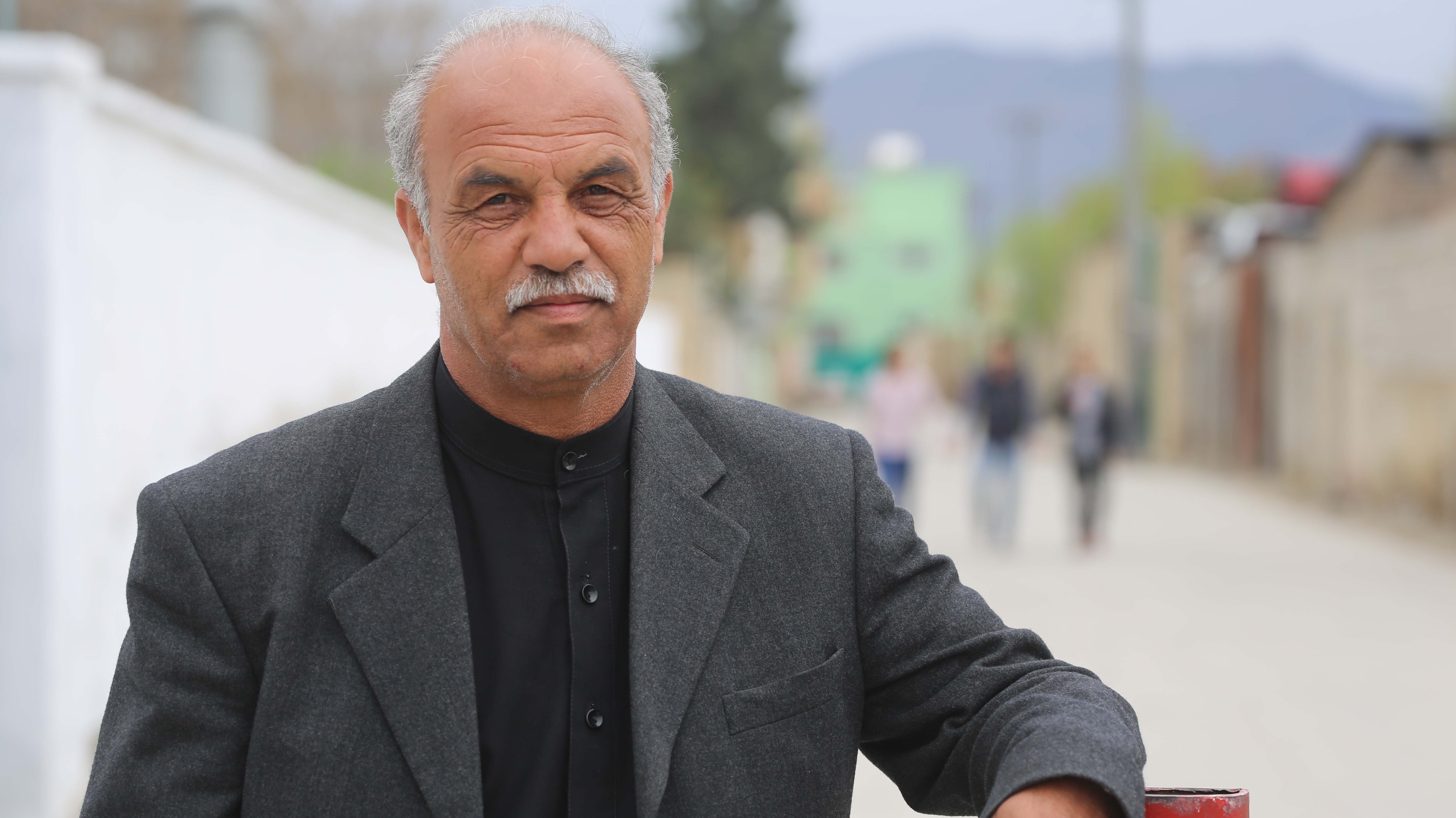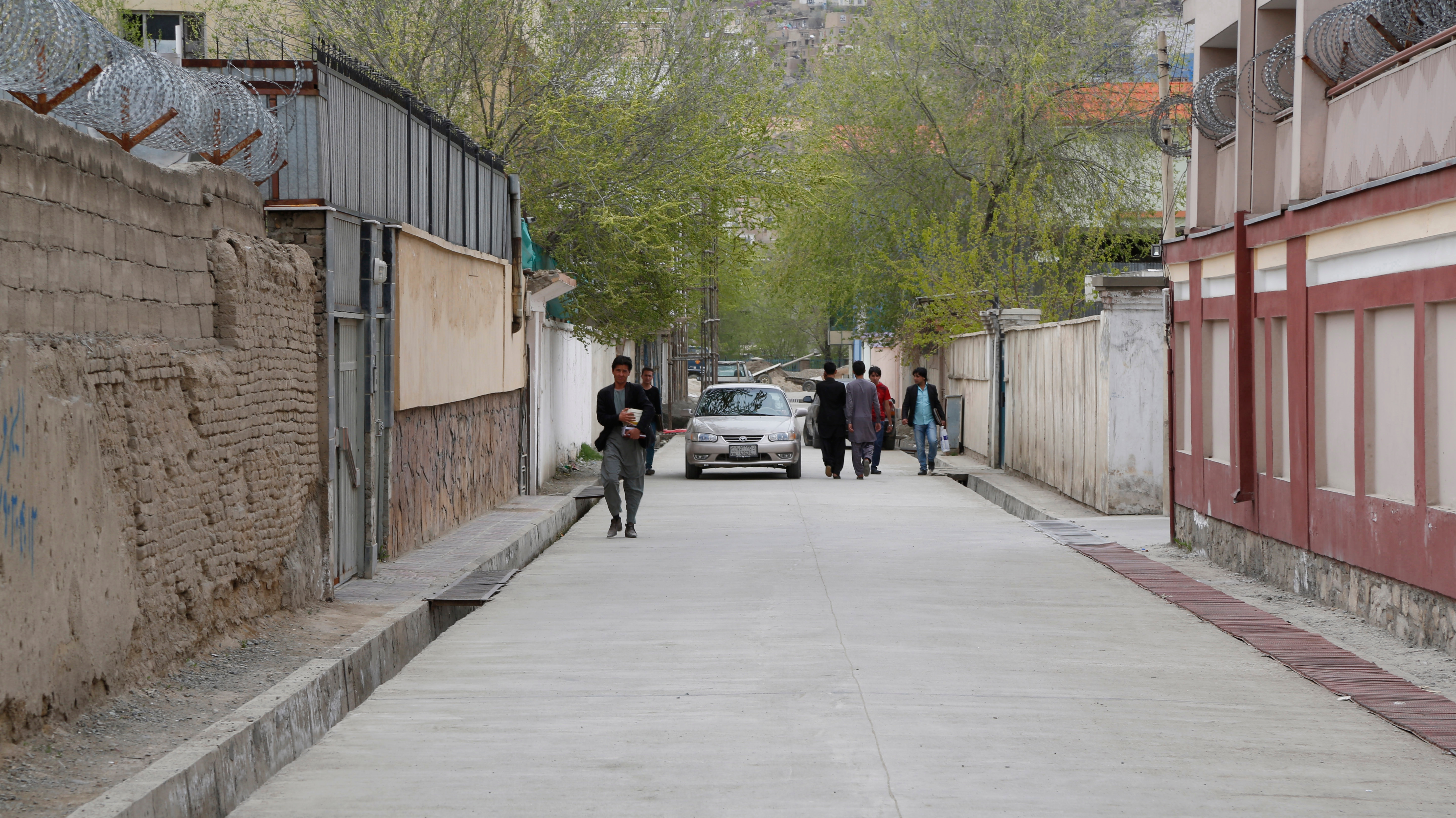KABUL CITY, Kabul Province –The distance between Mursal’s home and the main road is barely 20 meters, but, until recently, she would still be afraid of walking through this short alley. Thankfully, Mursal, 19, is now rid of her fear of walking in her neighborhood of Gozargah, in the western part of Kabul city.
Mursal, a journalism student, lives in phase 2 of Guzargah, home to 5,000 people in 946 households. “Our streets were unpaved and since this neighborhood is close to the river, the streets would become filled with water and mud during the rain and winter season,” she recalls. “There were no sewers either to drain the water away, our streets resembled the river. Walking through these streets was my biggest dread, which fortunately have now come to an end.”
Reconstruction of 43 streets in the Guzargah area began on April 4, 2014, and ended on January 14, 2015, under the Kabul Municipal Development Program (KMDP). KMDP, with $110 million grant support from the Afghanistan Reconstruction Trust Fund (ARTF), is implemented by the Kabul Municipality to improve street conditions in neighborhoods such as the one in Guzargah. KMDP’s objectives are to increase access to basic municipal services in selected residential areas of Kabul city; redesign Kabul Municipality’s Financial Management System to support better service delivery; and enable early response in the event of an eligible emergency.
KMDP is expected to benefit over 770,000 people through services provided in some 1,770 hectares of government-owned land. So far, there have been more than 310,000 direct beneficiaries (over 100,000 from upgrading and more than 210,000 from trunk roads) and over 76,000 indirect beneficiaries, including students and staff of several schools and institutions of higher education. About three-quarters of the beneficiaries are women and children. In addition, more than 670,000 man-days of temporary employment have been generated.



